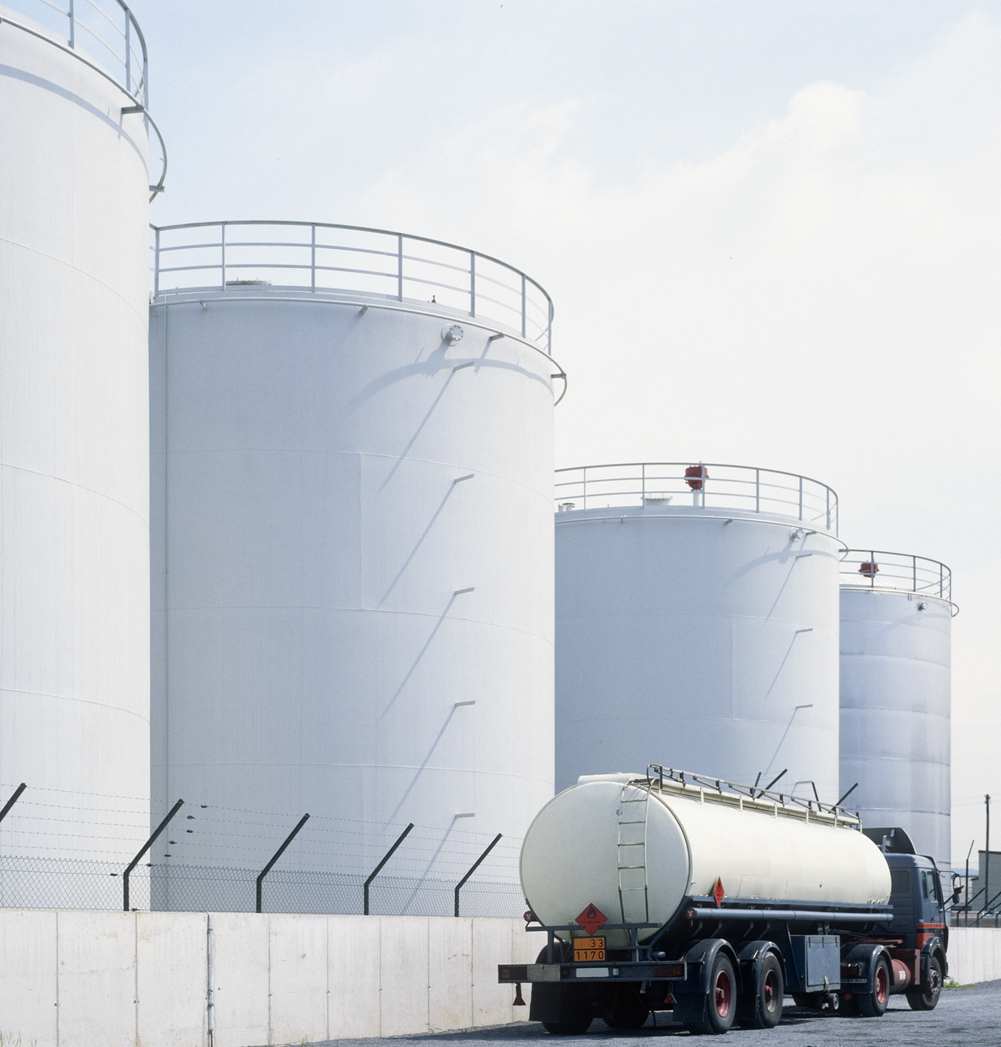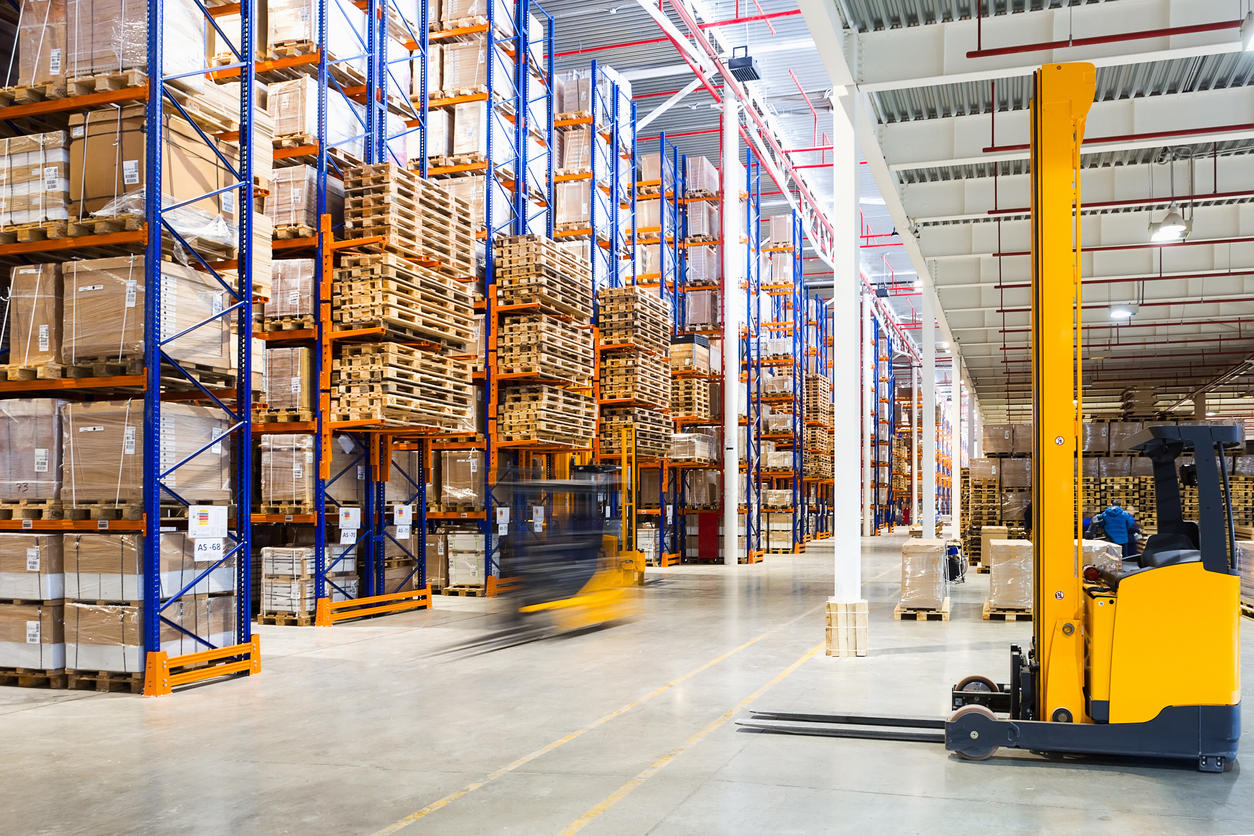Crack and Stress Inspection for LPG Storage Tanks: Ensuring Safety and Reliability
Crack and Stress Inspection for LPG Storage Tanks: Ensuring Safety and Reliability
In the world of LPG storage tanks, safety and reliability are paramount. As such, conducting regular crack and stress inspections is crucial to ensure these tanks are in optimal condition. Join us as we delve into the importance of these inspections and how they can help prevent potential disasters. Let’s explore how proper maintenance can safeguard both people and property in the realm of LPG storage.
Introduction: Importance of LPG storage tank safety
Introduction: Importance of LPG Storage Tank Safety
Liquefied Petroleum Gas (LPG) has become an important source of energy for various domestic and industrial applications. It is a highly flammable and potentially hazardous substance, which makes it crucial to ensure the safety of its storage and handling. This is where LPG storage tanks play a vital role.
LPG storage tanks are designed to safely store large quantities of this gas at high pressures, making them prone to potential risks such as cracks and stress. These can lead to serious accidents, causing harm to both people and property. Therefore, regular inspection and maintenance of these tanks are essential to ensure their safety and reliability.
In this section, we will discuss the importance of LPG storage tank safety in detail.
1. Preventing catastrophic accidents:
The primary reason for ensuring LPG storage tank safety is to prevent catastrophic accidents that can cause loss of life, property damage, and environmental hazards. The pressurized nature of LPG makes it extremely dangerous if not stored properly. Cracks or failures in the tank can result in explosions or fires that can have devastating consequences.
2. Complying with regulations:
Safety standards for LPG storage tanks are set by regulatory bodies such as OSHA (Occupational Safety and Health Administration) and NFPA (National Fire Protection Association). These regulations require regular inspections and maintenance of these tanks to ensure compliance with safety standards. Failure to comply not only puts individuals at risk but also leads to hefty fines for non-compliance.
3. Avoiding financial losses:
Apart from the obvious danger posed by unsafe LPG storage tanks, there is also a significant financial risk involved in neglecting their maintenance. In case of an accident involving an LPG tank failure due to lack of proper inspection or maintenance, companies may incur significant financial losses in terms of repairs or replacement costs, legal fees, insurance claims, etc.
4. Ensuring uninterrupted supply:
LPG storage tanks are essential for industries that depend on LPG as a primary source of energy. Any disruption in the supply due to tank failure can result in costly downtime, affecting production and profits. Regular inspections help identify potential issues before they turn into major problems, ensuring uninterrupted supply.
Conclusion:
The importance of LPG storage tank safety cannot be emphasized enough. It is crucial for the protection of life and property, compliance with regulations, avoiding financial losses, and ensuring uninterrupted supply. In the next section, we will discuss the process of crack and stress inspection for LPG storage tanks to ensure their safety and reliability.
Understanding the risks associated with LPG storage tanks
LPG storage tanks are widely used in various industries for storing and transporting liquefied petroleum gas (LPG). However, with the increasing demand and usage of LPG, it is important to understand the potential risks associated with these storage tanks. These risks can range from minor leaks to catastrophic explosions, making it crucial for proper inspection and maintenance of LPG storage tanks.
One of the main risks associated with LPG storage tanks is cracking. Cracks can develop in the tank due to various factors such as stress, corrosion, or manufacturing defects. These cracks can lead to leakage of highly flammable LPG which not only poses a threat to human life but also increases the chances of fire accidents. The severity of the crack depends on its location, size, and orientation. Hence, regular inspections are necessary to detect any cracks at an early stage before they worsen.
Another risk associated with LPG storage tanks is stress corrosion cracking (SCC). SCC occurs when a combination of tensile stress and corrosive environment leads to cracks in the metal surface. This type of damage may go undetected for a long time as it usually starts from the inside surface of the tank where it is not visible during routine external inspections. However, if left unnoticed or untreated, SCC can cause severe structural damage leading to tank failure.
Apart from cracks and stress corrosion cracking, other potential risks associated with LPG storage tanks include internal corrosion caused by exposure to moisture or impurities in the gas itself. This type of damage weakens the metal structure of the tank and makes it more susceptible to failures such as bulging or collapsing under pressure.
To ensure safety and reliability, it is essential to conduct regular crack and stress inspections for LPG storage tanks. These inspections involve thorough visual examinations as well as non-destructive testing methods like ultrasonic testing, radiography testing, magnetic particle testing among others. Such techniques help in detecting any existing defects or potential risks, allowing for timely repairs and maintenance.
In addition to regular inspections, it is also important to adhere to safety regulations and guidelines while handling LPG storage tanks. This includes proper installation, handling, and storage procedures, as well as conducting periodic risk assessments to identify potential hazards and take necessary precautions.
Understanding the risks associated with LPG storage tanks is crucial in ensuring the safety of not only the workers but also the surrounding environment. Regular crack and stress inspections, along with following safety protocols, can prevent catastrophic accidents and ensure the reliable operation of these essential equipment.
The role of proper coating in preventing cracks and leaks
The role of proper coating plays a crucial role in preventing cracks and leaks in LPG storage tanks. Coatings are applied to the external surface of the tank to protect it from corrosion, which is one of the main reasons for cracks and leaks in storage tanks. Corrosion can weaken the structural integrity of a tank, making it more susceptible to stress and ultimately leading to cracks and leaks.
Proper coating not only protects against corrosion but also acts as a barrier between the tank’s metal surface and the harsh environmental conditions. It prevents moisture from seeping into the tank, which could promote rusting and eventually lead to cracks or holes. Additionally, coatings can also protect against UV rays, chemical exposure, and extreme temperatures that can cause stress on the tank’s structure.
In addition to providing physical protection, coatings also have an important chemical role in preventing cracks and leaks. Some coatings contain anti-corrosive properties that neutralize any corrosive agents that come into contact with the tank’s surface. This helps maintain the structural integrity of the tank over time.
The type of coating used is critical in ensuring maximum protection for LPG storage tanks. Epoxy coatings are commonly used due to their excellent adhesion properties, high resistance to chemicals, and durability. They provide an impermeable barrier against water vapor diffusion while also protecting against acid gases present in some LPG mixtures.
Polyurethane coatings are another popular choice as they offer superior resistance against abrasion and impact damage. These coatings are ideal for tanks located in areas where there is heavy foot traffic or equipment movement.
It is essential to note that proper surface preparation before applying any coating is vital for its effectiveness. The surface must be thoroughly cleaned, dried, and free from any contaminants like oil or grease before applying any coating system.
Regular maintenance of coatings is also necessary for ensuring long-term protection against cracks and leaks in LPG storage tanks. Any damages such as chips, cracks, or peeling should be repaired promptly to prevent corrosion from setting in. It is also recommended to recoat the tank every 3-5 years for maximum protection.
Proper coating plays a significant role in preventing cracks and leaks in LPG storage tanks. By providing both physical and chemical protection, coatings can significantly extend the lifespan of these tanks while ensuring safety and reliability. Regular maintenance and choosing the right type of coating are essential factors that must not be overlooked to keep LPG storage tanks in optimal condition.
Types of inspection methods for LPG storage tanks
Types of Inspection Methods for LPG Storage Tanks
Proper inspection of LPG storage tanks is crucial for ensuring the safety and reliability of these containers. There are various types of inspection methods that can be used to detect any potential cracks or stress in the tank, which can compromise its integrity and pose a risk to both personnel and the environment. In this section, we will discuss some common types of inspection methods that are commonly used for LPG storage tanks.
1) Visual Inspection: This is the most basic form of inspection and involves visually examining the exterior surface of the tank for any signs of damage or deterioration. A trained inspector should look out for any visible cracks, dents, corrosion, or deformities on the tank’s body, supports, attachments, and fittings. Visual inspections should be conducted regularly as part of routine maintenance procedures.
2) Ultrasonic Testing (UT): UT is a non-destructive testing method that uses high-frequency sound waves to detect internal flaws in metal structures such as LPG storage tanks. A transducer probe is placed on the outer surface of the tank while emitting ultrasonic waves through the material. Any defects in the metal structure will reflect these waves back to the probe, which can then be analyzed by specialized software to determine their size and location.
3) Magnetic Particle Testing (MPT): MPT is another non-destructive testing method that uses magnetic fields to detect surface discontinuities such as cracks or pits in ferromagnetic materials like steel. The process involves magnetizing an area around a defect and applying iron particles with dye powder on it. The particles will accumulate at areas where there are magnetic leakages from a crack or pit, making them visible under UV light.
4) Dye Penetrant Testing (DPT): DPT is also a widely used non-destructive testing method that can detect surface defects such as cracks or leaks in metal surfaces. The process involves applying a liquid dye on the surface, which penetrates any cracks or pores. After a certain time, the excess dye is removed, and a developer is applied to make any defects visible.
5) Radiographic Testing (RT): RT is a widely used method for detecting internal flaws in metal structures such as LPG storage tanks. It involves exposing the tank to X-rays or gamma rays and capturing an image of its interior. Any defects such as cracks or inclusions will appear as dark spots on the image, allowing inspectors to determine their size and location.
Regular inspection using various methods can help identify any potential risks associated with LPG storage tanks before they become hazardous. These methods should be carried out by trained personnel following industry standards to ensure accurate results and maintain the safety and reliability of these essential containers.
Benefits of regular inspections and maintenance
Regular inspections and maintenance are crucial for ensuring the safety and reliability of LPG storage tanks. These procedures not only help prevent accidents and ensure compliance with regulations, but they also offer a range of other benefits.
First and foremost, regular inspections can identify any cracks or stresses in the tank before they become larger problems. Cracks in the tank walls or welds can lead to leaks or even catastrophic failures if left undetected. By conducting routine visual and non-destructive testing (NDT) inspections, any issues can be identified early on and addressed promptly.
Moreover, regular maintenance allows for proactive repairs and replacements to be made before a problem arises. This can significantly extend the lifespan of the storage tank and save time and money in the long run. For example, if a small crack is identified during an inspection, it can be repaired immediately rather than waiting for it to worsen and potentially requiring a full replacement.
In addition to preventing costly repairs or replacements, regular inspections also contribute to overall cost savings by improving efficiency. Any defects that are identified during an inspection can be addressed promptly, ensuring that the tank is functioning at optimal levels. This means less downtime for maintenance or emergency repairs, resulting in increased productivity.
Another significant benefit of regular inspections is improved safety. By identifying potential hazards early on, such as corrosion or structural weaknesses, steps can be taken to mitigate these risks before they cause harm to personnel or property. This is especially important when dealing with highly flammable substances like LPG.
Furthermore, conducting frequent inspections demonstrates a commitment to safety by complying with industry standards and regulations. Compliance with regulatory requirements not only ensures safe operations but also protects against liability issues in case of accidents.
Regularly scheduled maintenance also allows for better planning and budgeting for necessary repairs or replacements. By knowing when routine maintenance will take place, companies can allocate resources accordingly without any unexpected expenses arising from emergency repairs.
Conducting regular inspections and maintenance on LPG storage tanks is essential for ensuring safety and reliability. Not only do these procedures prevent accidents and comply with regulations, but they also offer numerous benefits such as early defect detection, cost savings, improved efficiency, enhanced safety measures, and better planning and budgeting. Therefore, it is crucial to prioritize regular inspections and maintenance to maintain the integrity of LPG storage tanks.
Partnering with Wigmore Trading for expert crack and stress inspection services in Nigeria
When it comes to crack and stress inspection services for LPG storage tanks in Nigeria, there is no better partner than Wigmore Trading. With over 20 years of experience in the oil and gas industry, Wigmore Trading has established itself as a reliable and expert provider of inspection services.
Wigmore Trading understands the critical importance of ensuring safety and reliability in LPG storage tanks. This is why they have invested in state-of-the-art equipment and highly trained technicians to conduct thorough inspections. They use advanced techniques such as ultrasonic testing, magnetic particle testing, visual inspection, and liquid penetrant testing to detect cracks and stress points in LPG storage tanks.
One of the key advantages of partnering with Wigmore Trading is their deep understanding of Nigerian regulations and standards for LPG storage tanks. They are well-versed with the guidelines set by regulatory bodies such as the Department of Petroleum Resources (DPR) and the Standards Organization of Nigeria (SON). This allows them to provide accurate assessments that meet all necessary requirements.
Moreover, Wigmore Trading has an extensive network across Nigeria which enables them to provide their services nationwide. Whether you have an LPG storage tank in Lagos or Kano, they can reach your site promptly and ensure timely inspection without compromising on quality.
Another factor that sets Wigmore Trading apart from other companies is their commitment to continuous improvement. They regularly update their processes and procedures to keep up with advancements in technology and changes in regulations. This ensures that their clients receive top-notch services that comply with all relevant standards.
Furthermore, Wigmore Trading values transparency and prioritizes open communication with clients throughout the entire inspection process. They provide detailed reports on findings along with recommendations for repairs or maintenance if needed. This allows clients to make informed decisions regarding the safety and reliability of their LPG storage tanks.
Partnering with Wigmore Trading for crack and stress inspection services guarantees peace of mind for owners or operators of LPG storage tanks in Nigeria. Their expertise, adherence to regulations, nationwide reach, commitment to continuous improvement, and transparent communication make them the perfect choice for ensuring the safety and reliability of your LPG storage tanks.
Leak detection techniques and their importance in ensuring safety and reliability
Leak detection is a crucial aspect of ensuring the safety and reliability of LPG storage tanks. These tanks are used for storing large quantities of highly flammable gas, making it essential to detect any potential leaks before they pose a threat to people and the environment.
There are various techniques used for leak detection in LPG storage tanks, each with its own advantages and limitations. The most common methods include visual inspection, pressure testing, ultrasonic testing, and gas detection systems.
Visual inspection involves physically inspecting the tank for any signs of leakage such as cracks, corrosion or damaged fittings. This technique is relatively simple and cost-effective but may not be able to detect small leaks that are not visible to the naked eye.
Pressure testing is another commonly used method where the tank is pressurized with air or water while being monitored for any changes in pressure that could indicate a leak. This technique can identify even minor leaks but requires specialized equipment and trained personnel to conduct the tests accurately.
Ultrasonic testing utilizes high-frequency sound waves to detect leaks by measuring changes in sound patterns caused by escaping gas. It is a non-destructive testing method that can locate leaks in hard-to-reach areas of the tank without interfering with its operation.
Gas detection systems use sensors placed strategically around the tank to monitor for any presence of leaked gas. These systems provide continuous monitoring and alerts in case of any potential hazards. However, they require regular maintenance checks and calibration to ensure accuracy.
The importance of utilizing these leak detection techniques cannot be overstated when it comes to LPG storage tanks’ safety and reliability. Leaks can result from various factors such as material fatigue, stress-induced cracks or corrosion over time. If left undetected, these leaks can lead to catastrophic consequences such as explosions or fires.
Regular inspections using these techniques allow for early detection of leaks so appropriate measures can be taken before they escalate into more significant problems. This not only ensures the safety of personnel working around the tank but also prevents any potential damage to the environment.
Leak detection techniques play a crucial role in ensuring the safety and reliability of LPG storage tanks. The use of these methods can help identify potential leaks at an early stage, allowing for timely repairs and maintenance to minimize any risks. Regular inspections using a combination of different techniques are necessary to ensure the continued safe operation of these vital structures.
Conclusion: Prioritizing safety through regular inspections and maintenance.
Conclusion: Prioritizing Safety Through Regular Inspections and Maintenance
It is clear that crack and stress inspections are crucial for ensuring the safety and reliability of LPG storage tanks. By identifying any potential weaknesses or damage in the tank, these inspections allow for necessary maintenance to be performed before a catastrophic failure occurs.
Regular inspections should be a top priority for anyone responsible for managing LPG storage tanks. This includes not only tank owners but also regulatory bodies and inspectors. It is essential to follow industry standards and guidelines regarding inspection frequency and techniques in order to maintain the highest level of safety.
While it may seem like an added expense, investing in regular inspections can actually save money in the long run by preventing costly repairs or replacements due to unexpected failures. In fact, many insurance companies require proof of regular inspections in order to provide coverage for LPG storage tanks.
Another important aspect of ensuring safety through regular inspections is proper maintenance. If issues are identified during an inspection, they must be addressed promptly by qualified professionals. This may involve repairs or replacement of components such as valves, fittings, or welds. Neglecting necessary maintenance can lead to serious consequences including leaks, fires, or explosions.
It is important to note that even with regular inspections and maintenance, no tank can last forever. Eventually, all tanks will reach their end of life and require retirement and replacement. However, by prioritizing safety through regular inspections and maintenance throughout the lifespan of an LPG storage tank, we can ensure its longevity while keeping our communities safe from potential hazards.
Crack and stress inspections are vital components of maintaining safe LPG storage tanks. These routine checks allow us to identify any potential issues before they turn into major problems that could jeopardize both property and lives. By following industry standards for inspection frequency and properly addressing any concerns identified during these assessments with prompt maintenance actions from qualified professionals, we can ensure the continued reliability and safety of LPG storage tanks. Remember, regular inspections and maintenance are an investment in both the longevity of the tank and the safety of those around it.







Comments are closed.